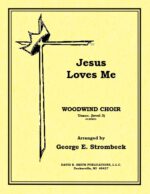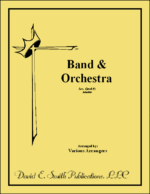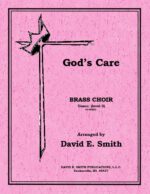| Instrument | |
|---|---|
| Level | 3 |
| Occasion | |
| Tune Name | |
| Theme | Jesus Loves Me |
| Writer | |
| Composer | |
| Publisher | |
| Copyright | 1995 |

Jesus Loves Me
$1.50
Related products
-
-
The Master Hath Come
$11.00Three Plus Flutes for three soprano with opt. 4th/ob. with alto and bass & piccolo. An introduction using unrelated material leads the tune presented in voice two, supported by harmonies in the lower voices, then an obbligato-like motion added by the upper voice. A modulation upward makes room for a duet in the upper lines, later joined by the lower voices in a contrapuntal fashion. The final section becomes more vigorous and imitative until a solid, declamatory ending.
-
Go Tell/Mountain (band acc)
$35.00A band accompaniment for the woodwind solo based on the piano accompaniment found in the solo/piano version. It comes with four woodwind solo lines as well as a full band set. The piece’s counterpoint features the combination of both themes of the tune at the same time.
-
-
God’s Care
$10.00(3-tpt, 2-hn, 2-tmb, BH, tba): God Be With You; God Leads Us Along; God Will Take Care of You; We Have An Anchor






